The Continental Artillery was commanded by Brigadier General Henry Knox. Most of the cannons were kept here, near the center of the encampment. This allowed them to be rushed to the point of attack... although not easily since the roads were deep in mud and the horses were starving.

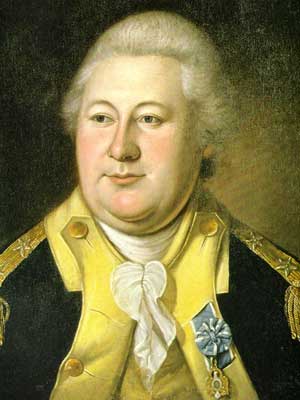
Henry Knox (1750 - 1806)

Ideally a crew of 15 men would work each cannon, but they often made do with far less.



Ron lights the fuse!
The Grand Parade was the center of the encampment. It is the only area expansive enough for training large numbers of men.



Major General Friedrich von Steuben was responsible for training the Continental troops. While soldiers were basically trained, they came from many different states and there was no uniformity. Coordinated battle movements were awkward and difficult.
Von Steuben used to serve in the Prussian Army. He arrived at Valley Forge from France in February, 1778, and Washington assigned him as a drill instructor. He taught the soldiers how to aim muskets, charge with bayonets, and maneuver together in compact ranks. Unfortunately he spoke very little English so he usually had to have someone translating his orders. Eventually he wrote a training manual in French, which (after being translated) became the official American military training guide until the War of 1812.

Friedrich Wilhelm August Heinrich Ferdinand Steuben (born Friedrich Wilhelm Ludolf Gerhard Augustin von Steuben, aka Baron von Steuben, 1730 -1794)

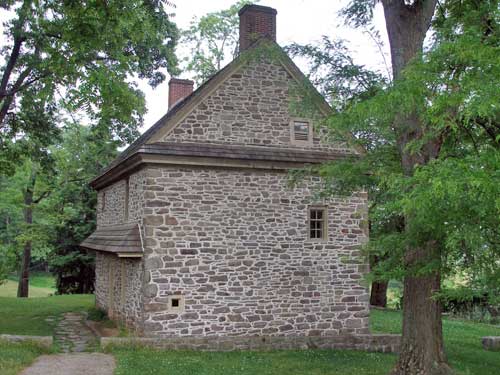
This was the home of David and Elizabeth Stephens and their family. They allowed a large portion of their farmland to be used for the Grand Parade and also donated a room to serve as brigade headquarters and as temporary living quarters for General James Varnum. After his own hut was completed, he joined his Rhode Island and Connecticut brigades nearby.


James Mitchell Varnum (1748 - 1789)
The first stone of Washington's Memorial Chapel was laid on June 19, 1903, exactly 125 years after his army left Valley Forge. It was an unusual combination of gothic and American Revolution. Instead of saints were soldiers, and instead of bishops were presidents.

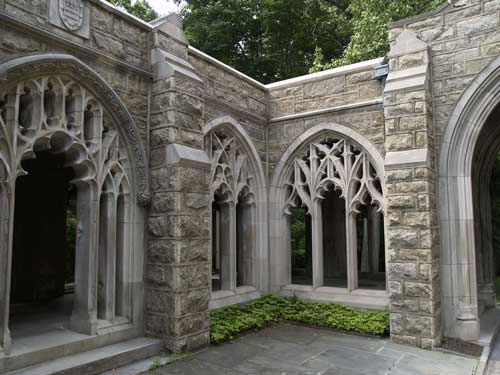

A statue honoring the mothers of the nation
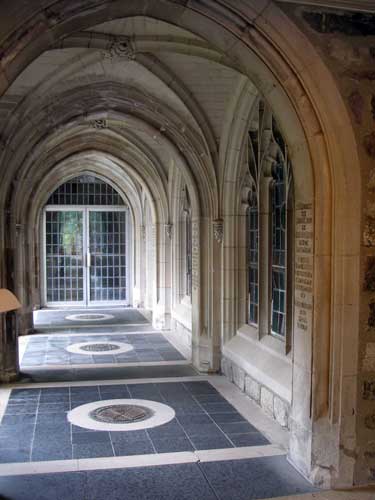
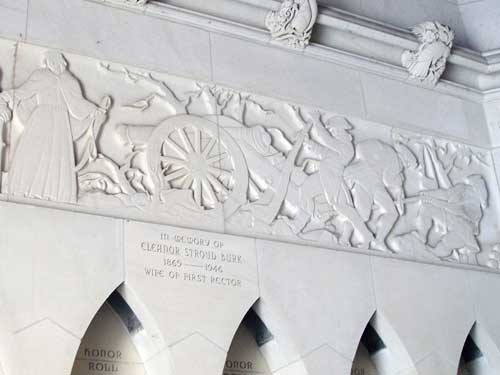

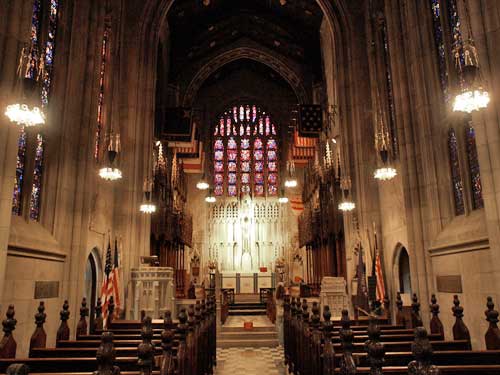
The altar


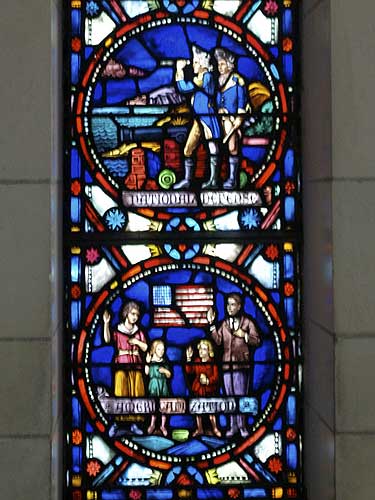
The stained glass windows from Philadelphia showed patriotic scenes.

The choir

Each stalls honored a brigade with a figure of a soldier in the uniform of that brigade.
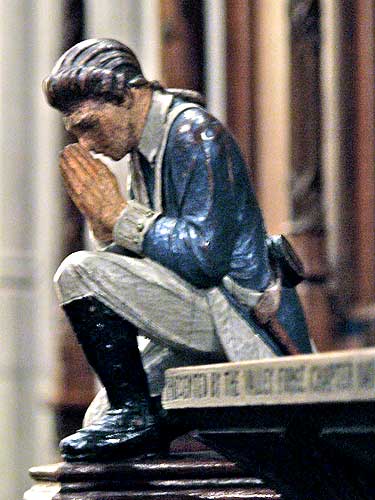

Washington sits in an alcove.

Cannons decorate this bronze plaque.


The Justice Bell, located in chamber of the bell tower, was a replica of the Liberty Bell. Forged in 1915 in the first Meneely bell foundry (established in 1826 in New York), it toured the country to promote the passing of the 19th Amendment in 1920 and became an important symbol of the Women's Suffrage movement. It found a home here in 1943.
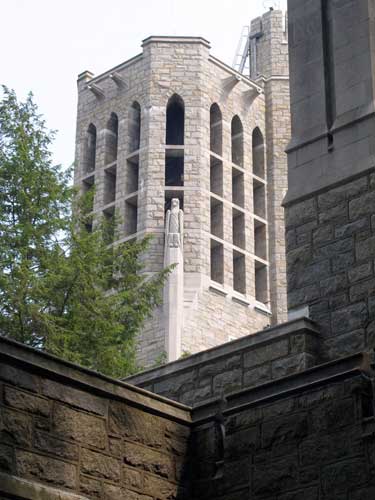
The bell tower
return

